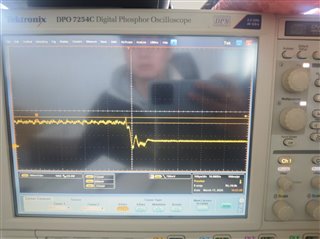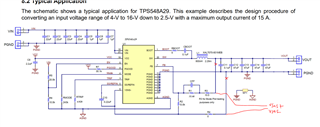Tool/software:
1.During the current test, it was found that the PCB power line is too long, causing a voltage drop at high current due to the DC impedance. Currently, we are using near-end feedback. If we switch to remote sensing, can we use only the positive terminal single-ended method?
2.The TPS548A29 has encountered unstable operation and there is a probability of output stoppage.
3.A 0.1 uf capacitor was added to the remote sensing differential line.
4.This is the power rail diagram for an FPGA on the power board. It uses two stages: the first stage converts 12V to 5V with a local feedback (FB); then, 5V is converted to 0.95V, 1.0V, 1.2V, and 1.8V using four converters, all with remote feedback (FB).
5. We found during testing that the 12V to 5V converter at the first level would occasionally stop outputting power suddenly. Well, you go ahead and be busy. When you have time, could you help analyze the possible reasons? 

6.This is the waveform at the FB terminal of the 12V to 5V DC-DC converter during an abnormal condition.
What are the above problems and how to solve them, please explain in detail


